Photographs: Andrew Biraj/Reuters Syed Tashfin Chowdhury in Dhaka
Bangladesh has discovered new 'commercially viable' oil reserves in Sylhet, the northern region of the country, following a three dimensional seismic survey in five gas fields in the region last year by Bangladesh Petroleum Exploration Company.
The discovery has boosted morale of officials of the State-run Bangladesh Oil, Gas and Mineral Corporation (Petrobangla), the parent company of Bapex, who are hoping that other oil fields may be found in similar gas fields across the country.
During a press briefing at the Petrocentre in Kawran bazaar of Dhaka on May 20, Petrobangla officials estimated that the total worth of around 55 million barrels of extractable oil, discovered in abandoned gas fields of Kailashtila and Haripur, can be between Tk 420 to Tk 425 billion ($5.13 billion to $5.5 billion), although the total reserves in the two fields is around 137 million barrels.
. . .
Bangladesh finds new oil reserves in Sylhet
Image: A station attendant receives money from a customer after filling up a car at a petrol station in Dhaka.Photographs: Andrew Biraj/Reuters
On the basis of a 40 per cent recovery rate, Petrobangla officials informed that from 109 million barrels of oil, found at around 4,000 meters depth in Kailashtila, around 44 million barrels of oil can be produced through the existing system.
Also, from 28 million barrels of oil, found around 2,600 meters, in Haripur field, 11 million barrels can be produced through the existing system.
Petrobangla also announced at the briefing that Bapex will soon initiate deep drilling into these two fields, which will also be considered as oil fields from now on.
Bangladesh's Prime minister Sheikh Hasina, who is also the energy minister, has instructed Petrobangla to take 'immediate steps' to tap the oil resources so that production can begin in a year's time.
. . .
Bangladesh finds new oil reserves in Sylhet
Image: Masud, 6, shows scraps which he collected near a vehicle spare parts store in Dholaikhal, Dhaka.Photographs: Andrew Biraj/Reuters
Bapex has already proposed the drilling of four wells in Kailashtila and three wells in Haripur, to extract the natural resources.
An international oil company may be awarded the task of producing oil from the two reserves.
The discovery is the fruit of a $ 20 million 3-D seismic survey project conducted by Bapex on a total area of 1,250 square kilometres in Kailashtila, Haripur, Rashidpur, Titas and Bakhrabad fields of Sylhet Gas Fields Company Limited in 2011.
The seismic survey project was approved by the Bangladesh government in 2010.
Although Rashidpur did not have any oil, an estimated 1 trillion cubic feet (tcf) of gas was also discovered in Rashidpur in September 2011.
Professor Mohammad Hossain Mansur, chairman of Petrobangla, is anticipating 'positive results' on oil from the well-log reports and seismic survey data of the Bakhrabad and Titas gas fields.
. . .
Bangladesh finds new oil reserves in Sylhet
Image: An auto-rickshaw (centre) overtakes an elephant on a busy highway near Dhaka.Photographs: Andrew Biraj/Reuters
"At the Haripur field, 11 million barrels of oil will be extracted from one of two layers. We may find oil in the other layer also," he told rediff.com, adding that 3-D seismic surveys may be conducted in other gas fields of Bangladesh.
As far as gas is concerned, Petrobangla sources informed that Kailashtila has 1.224 tcf of recoverable reserve while the Haripur field has 310 billion cubic feet (bcf). Bapex also discovered a new gas zone in Haripur, where around 223 bcf of gas maybe found.
However, the latest gas reserve estimates are lower than earlier figures estimated at 1.904 tcf for Kailashtila and 479 bcf for Haripur, following 2-D seismic survey.
Till April 2012, around 517 bcf gas has been produced from Kailashtila gas field while around 196 bcf gas has been produced from Haripur gas field.
This is not the first time that oil has been discovered in Bangladesh.
. . .
Bangladesh finds new oil reserves in Sylhet
Image: Employees of Grameen Bank form a human chain in front of their central office after a court upheld an order removing Nobel laurate Muhammad Yunus as head of the microlending bank he founded, in Dhaka.Photographs: Andrew Biraj/Reuters
Earlier, oil was found in Haripur of Sylhet in 1986.
According to Banglapedia, the 'field had an in-place oil reserve of 10 million barrels, from which 6 million barrels were recoverable'.
International oil company Scimitar was given the responsibility to produce oil from the field in 1987. Till 1994, after producing around 560,000 barrels of oil, Scimitar halted production due to 'low pressure' and later concluded operations in Bangladesh.
The oil field was later abandoned.
New Age reported on May 21 that after coming under Petrobangla's wing in 1989, Bapex had discovered another oil field at Kailashtila where it had drilled an exploration well and conducted a successful drill stem test in the two oil-layers out of five. Bapex had also found crude oil in Fenchuganj.
. . .
Bangladesh finds new oil reserves in Sylhet
Image: A vegetable vendor takes a nap during a hot summer afternoon at Karwanbazar in Dhaka.Photographs: Andrew Biraj/Reuters
However, both these two reserves are yet to be proved as 'commercially viable'.
Even with 55 million barrels of oil, Bangladesh can fuel itself for nearly two years as the country imports around 25 million barrels of oil ever year.
"This oil can help Bangladesh by reducing import bills," said Mansur.
The oil, once produced, can also reduce the pressure on Bangladesh's foreign currency reserves, which has not been able to maintain a $ 10 billion mark for long in the past few months due to increasing import bills.
Trade deficit for Bangladesh has already increased to $6.59 billion between July 2011 till March 2012 period of ongoing fiscal, which is a 13.04 per cent increase against figures of corresponding period of 2010-2011 fiscal year.
. . .
Bangladesh finds new oil reserves in Sylhet
Image: A usually busy Dhaka street is empty during a strike.Photographs: Andrew Biraj/Reuters
Xinhua reported that although $17 billion worth of goods were exported from July till March, around $ 24 billion worth of imports have led to the deficit.
The deficit is mostly due to Bangladesh's dependence on 17 operational rental power plants, for which fuel oil are imported in huge quantity every year.
The rental power plants have been perceived as a quick although expensive solution to the ongoing power crisis in Bangladesh.
On May 19, 2012, against a daily demand of 6,300MW of power in Bangladesh, only 5,230MW was generated.
The power sector is affected as the government veered away from gas-fuelled power plants due to dwindling gas reserves.
At the moment, Bangladesh is producing around 2,000mmcfd of gas daily against a daily demand that is expected to grow to 3,382mmcfd by end of this year.
Bangladesh cannot even take advantage of its coal reserves as a national coal policy is yet to be approved, although its draft was first finalised in 2005.

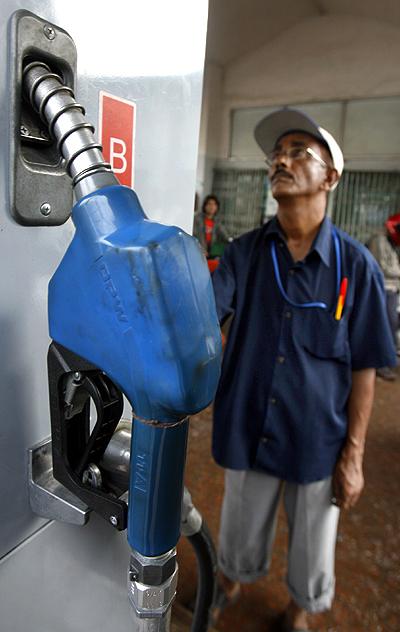

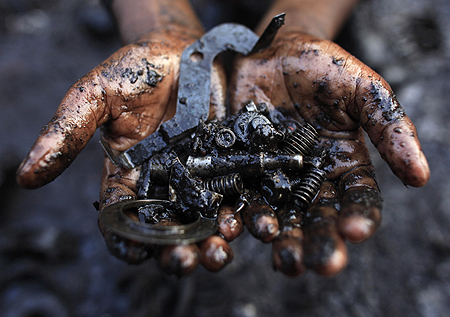
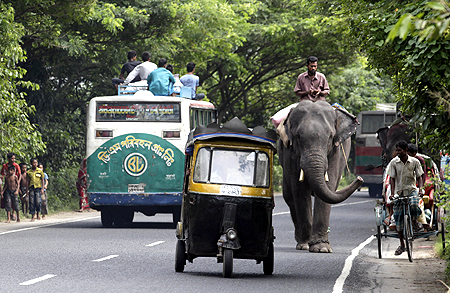
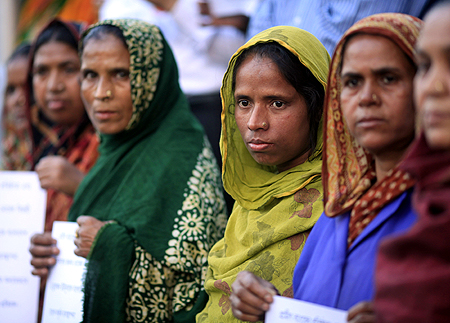
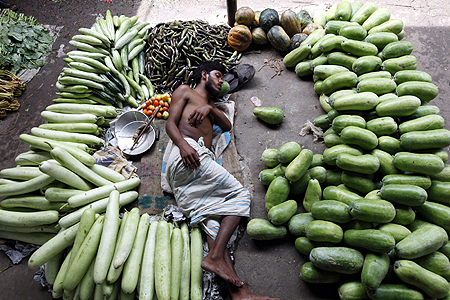
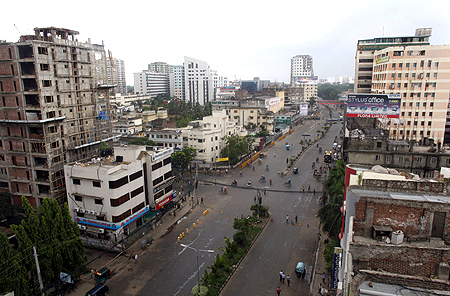
article